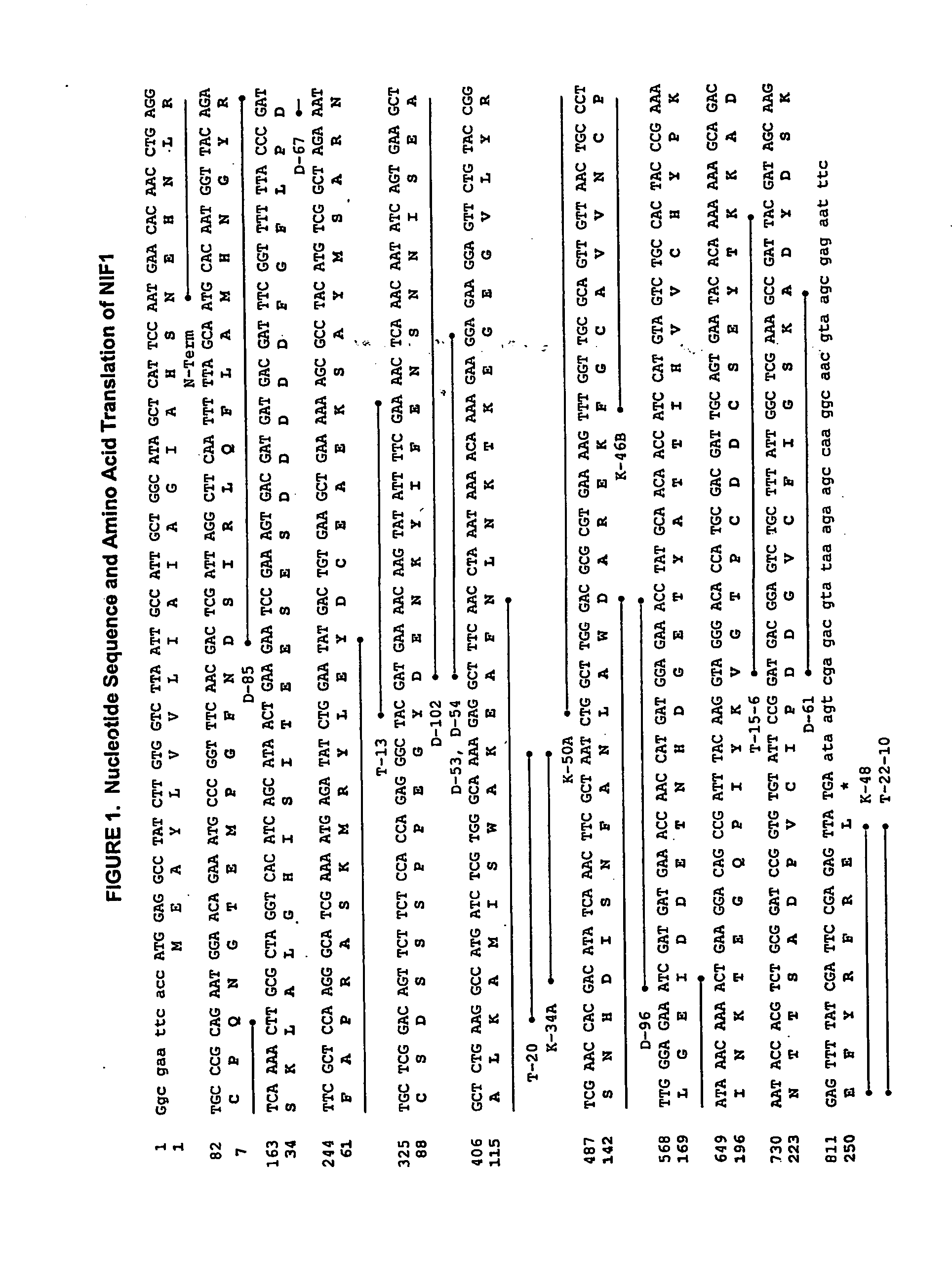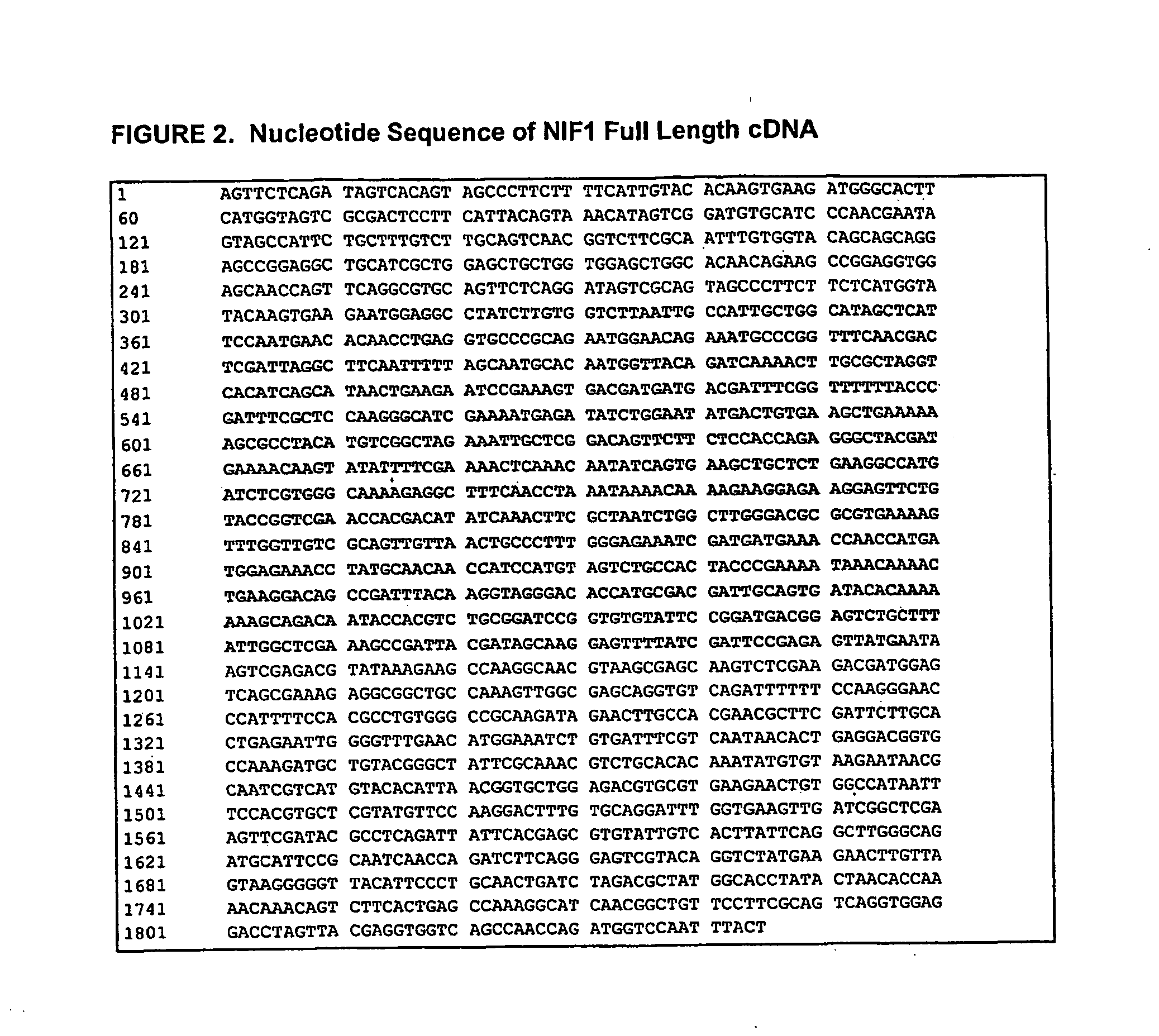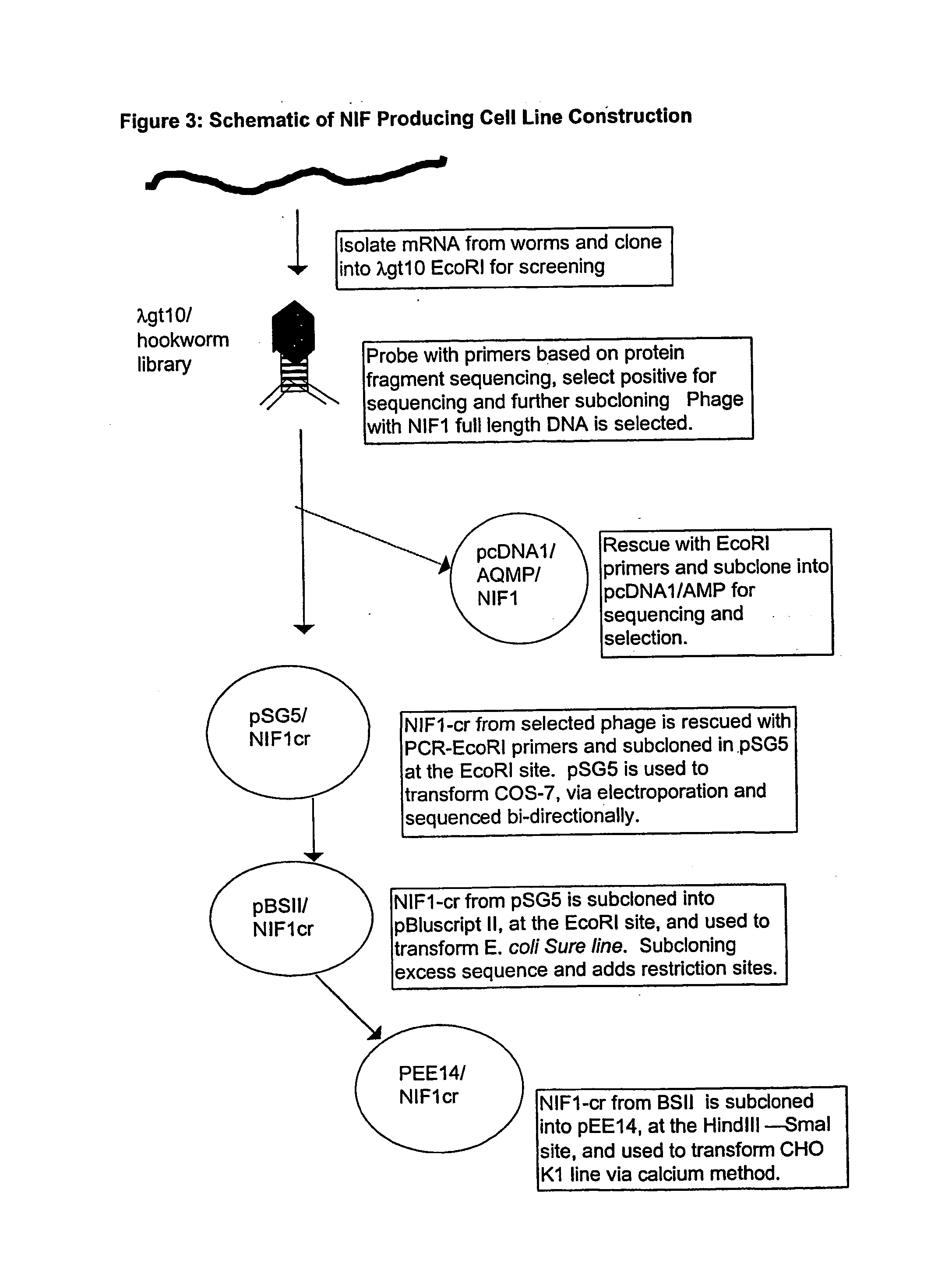Process for the preparation of neutrophil inhibitory factor
a technology of neutrophils and inhibitors, applied in the field of process for the preparation of neutrophil inhibitors, can solve the problems of significant tissue damage, abnormal inflammatory response, and known damage to the host tissu
- Summary
- Abstract
- Description
- Claims
- Application Information
AI Technical Summary
Benefits of technology
Problems solved by technology
Method used
Image
Examples
example 1
[0206] Cell Line Expressing NIF
[0207] A. The Nucleic Acid Encoding NIF
[0208] The coding sequence for recombinant NIF was derived from a canine hookworm (Ancylostoma) cDNA library to which standard expression regulatory sequences were added during plasmid construction. The nucleotide sequence of NIF-1FL, mature NIF-1FL (NIF1) and the corresponding full-length cDNA are presented in FIGS. 1 and 2, respectively. The nucleotide sequence in FIG. 2 has an open reading frame of 822 nucleotides encoding a 274 amino acid polypeptide (nucleotides 313 through 1134).
[0209] B. Construction of the Expression Vector
[0210] The NIF1 cDNA described above was cloned into a series of shuttle vectors and hosts, and finally into the pEE14 vector, as follows. FIG. 3 is a schematic representation of the pathway from NIF1 cDNA to pEE14 vector which was used for transfecting CHO-K1 cells. Some of the biochemicals used in the cell line construction process and their respective suppliers are as follows (Table I...
example 2
[0225] Adaptation to Suspension Culture and Serum-Free Medium
[0226] A. Subculturing of Cell Line in T-Flask Cultures
[0227] One of the cultures as prepared in Example 1 was further grown in a medium consisting of DMEM:RPMI1640 50:50 (glutamine free) (50:50 mix of DMEM (Dulbecco's Modified Eagle Medium, Gibco Catalog No. 11960) and RPMI1640 (Roswell Park Memorial Institute, Gibco Catalog No. 21870); 10% Certified Heat Inactivated Fetal Bovine Serum (Gibco); with 1 ml per liter medium of a 25 mM (1000.times.) L-methionine sulfoximine stock solution (Sigma).
[0228] The medium was decanted off. The monolayer was rinsed twice with 10 ml of Dulbecco's PBS (calcium and magnesium free); the Dulbecco's PBS was decanted and 2 ml of versene was added to the monolayer. The culture with versene was incubated at 37.degree. C. for 5 minutes. The flask was rapped several times to dislodge the cells and resuspended in an additional 18 ml of fresh medium and split 1:5 to new T-flasks. The culture was i...
example 3
[0240] A. Medium for the Generation of the Inoculum Culture
[0241] The culture medium for the inoculum culture was prepared from the following components:
[0242] 1.0 liter CHO-III-PFM solution with glucose (Life Technologies, Custom Formula 98-0289 ; with 3.45 g / l D-glucose; without hypoxanthine, thymidine, L-glutamine);
[0243] 10.00 ml / l HT supplement (Life Technologies, Catalog No. 11067-030; 100.times.=10 mM sodium hypoxanthine, 1.6 mM thymidine);
[0244] 20.00 ml / l amino acid stock (as prepared in 3B below);
[0245] 1.00 ml / l 25 mM L-methionine sulphoximine stock (as prepared in 3C below);
[0246] 25.00 mg / l L-cysteine (Sigma); and
[0247] 0.50 ml / l phenol red (Sigma, 0.5% (w / v) solution).
[0248] B. Amino Acid Stock
[0249] The amino acid stock used in the inoculum culture medium above was prepared by dissolving: 3.00 g / l L-aspartic acid (Sigma), 2.50 g / l L-glutamic acid (Sigma), 10.00 g / l L-asparagine (Sigma), 1.25 g / l L-proline (Sigma), 3.00 g / l L-serine (Sigma), and 1.50 g / l L-methionine (...
PUM
| Property | Measurement | Unit |
|---|---|---|
| relative molecular weight | aaaaa | aaaaa |
| temperature | aaaaa | aaaaa |
| temperature | aaaaa | aaaaa |
Abstract
Description
Claims
Application Information
 Login to View More
Login to View More - R&D
- Intellectual Property
- Life Sciences
- Materials
- Tech Scout
- Unparalleled Data Quality
- Higher Quality Content
- 60% Fewer Hallucinations
Browse by: Latest US Patents, China's latest patents, Technical Efficacy Thesaurus, Application Domain, Technology Topic, Popular Technical Reports.
© 2025 PatSnap. All rights reserved.Legal|Privacy policy|Modern Slavery Act Transparency Statement|Sitemap|About US| Contact US: help@patsnap.com



